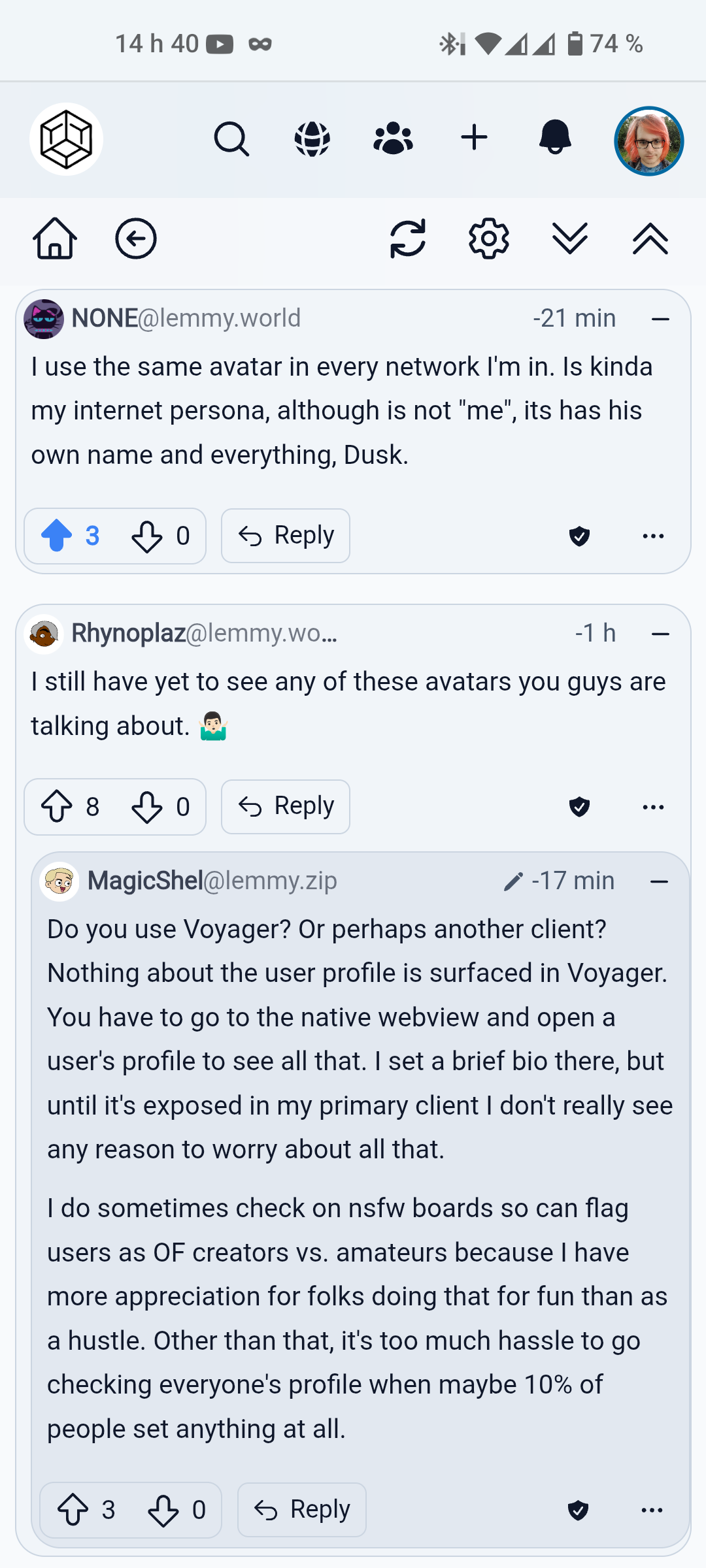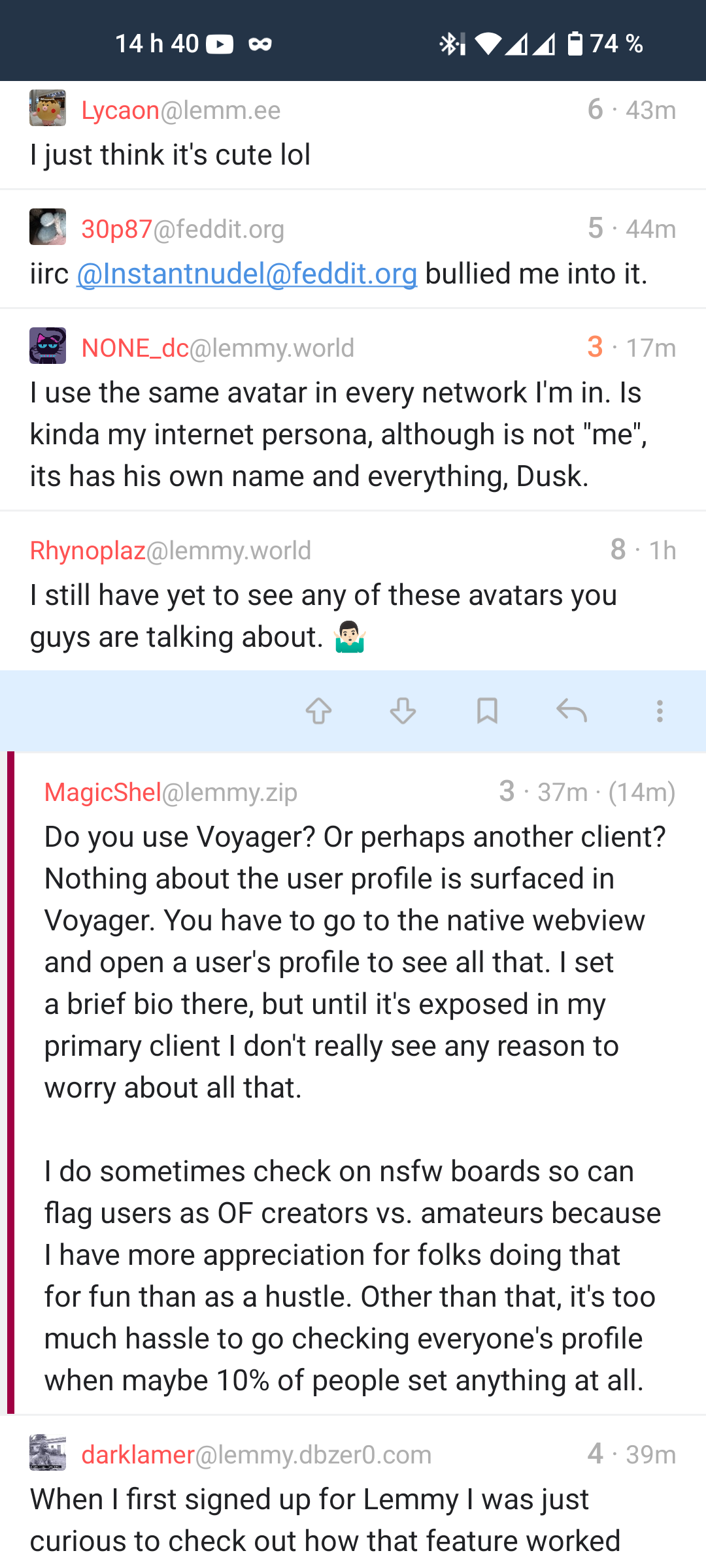I don't remember the exact details but it didn't work right. That was arguably a couple years ago on a server distro approaching EOL, may have been long fixed. It involved Android 4.4.
Max_P
Few of them for most use cases, especially a VPS. My server have a couple of IPs each mapping to a different VM, they can all claim 22/80/443 as you'd expect, but that's just basically the same as having a bunch of VPSes anyway.
It's useful for some other uses like, I might want to dedicate an IP for VPN exit that doesn't expose any services.
Another use is sometimes you just want two things to stay entirely separate, even if on a technical level it could work with a reverse proxy. It can eliminate some class of exploits like request smuggling.
One use case I've had for a customer is they have a system that can only do TLSv1.0, which is wildly obsolete and exploitable. So that particular API endpoint was served from a secondary IP, that way I can continue to enforce TLSv1.2+ on the primary IP. It's possible with some reverse proxy magic with HAproxy, but I could also just make a new server block in the existing NGINX bound to that IP and call it a day.
I think I'm kind of on the other extreme, I day dream a lot. It's like I can experience anything I've experienced before on demand and replay it. Sometimes it's annoying, it's like someone left 3 TVs and 2 radios on in my head and I can't turn it off.
I didn't know that was a thing until today, but also totally unsurprised, the brain is super weird.
I don't struggle to picture it though, that only works for me if the book is interesting. When it's boring (ie. forced to read it and there's a test), I think my brain falls back to how you read books.
How do you guys without aphantasia manage to read when there's pictures whizzing around your head all the time??
For me, the book and my surroundings completely disappear, the whole thing turns into a dream-like movie experience. I don't see letters or words at all, it becomes an unconscious process that keeps feeding the dream and it looks similar to fuzzy AI videos.
Sometimes the process of getting pulled out into reality again can be brutal: suddenly it's 3h later and I have to look around and take a moment to settle back. If you dream while you sleep, it's like when you suddenly wake up while you were in an intense dream, takes a moment to process. I'm really completely gone in another world the whole time.
Í wonder if visualizing what you read slows people down.
Not really, I can read very fast too and also visualize it at the same time, like full blown movie. I think it's more indicative of information processing abilities in general: I can generally keep up watching lectures at 3x speed and notice things on screen almost instantly too.
I'm super efficient at filtering information too: I'll look at a paragraph in some documentation and immediately see "If you're in X special case, then..." at the 5th sentence in the middle of the paragraph when skimming through documentation. Or of course skipping details I don't care about.
I consider this one to be my public/serious account, so, eh why not, it adds a face, a personnality. And I think I look cute on it. Due to the origin of my nickname, it's realllly not that hard to find out who I am. Facebook ruined the anonymity aspect a decade ago, so I just live with it. And it's a little bit more recognizable than just the username. For anonymity I have alts.
It has some downsides though, like people telling me I look like I got my dick chopped off. I'm cis, my dick is perfectly intact. Come on guys it's just hair dye lol.
Tesseract and other clients kinda do:


Linux Mint devrait faire, si tu veux un peu plus de légèreté je prendrais l'édition XFCE. Facile à installer, et facile à utiliser. Sinon Ubuntu est aussi très facile à installer, comme tu as aimée l'interface d'Ubuntu.
Mint est basé sur Ubuntu alors la majorité de la documentation pour Ubuntu s'applique aussi, ainsi que sa base Debian. Les deux sont très bien documentés en français.
Surtout si tu ne veux plus Windows et pas de dual-boot, c'est pratiquement sélectionner le français, cliquer sur installer, répondre à quelques questions, suivant suivant terminé.
Linux n'est pas si difficile que ça, c'est surtout différent et pas vraiment familier. Imagine t'as jamais touché un Mac et tu obtiens un Mac, faut réapprendre comment faire certaines choses. Là où Linux devient compliqué c'est quand on commence à faire tourner les logiciels fait pour Windows dessus. Linux ne dis jamais non, y'a toujours moyen, mais ce moyen peut devenir très très compliqué.
Then it's not the GPU, as it doesn't appear to be using it in the first place.
What's the rest of the hardware? Tried disabling hardware acceleration and see if it makes a difference?
I had more in mind like an AM3 platform with an FX CPU, or equivalent old Intel platform.
Really starts depending on what you run on that GPU, like it'll render Furmark just fine at full tilt but a modern open world game will probably struggle with asset pop-in and stutters because of both bandwidth and the CPU not issuing draw calls fast enough to keep up with the GPU.
What do you want the UI for? For configuration it's usually meh because it's the kind of thing you configure by config file, often generated config files even. For stats it's where it gets interesting, usually third-party options like Grafana is used along with something like Prometheus to collect the metrics.
When it comes to easy configuration, newer options go for the zero configuration angle rather than a nice UI to configure it. Just need some Docker tags and Traefik automagically configures itself, so the UI is just for viewing information.